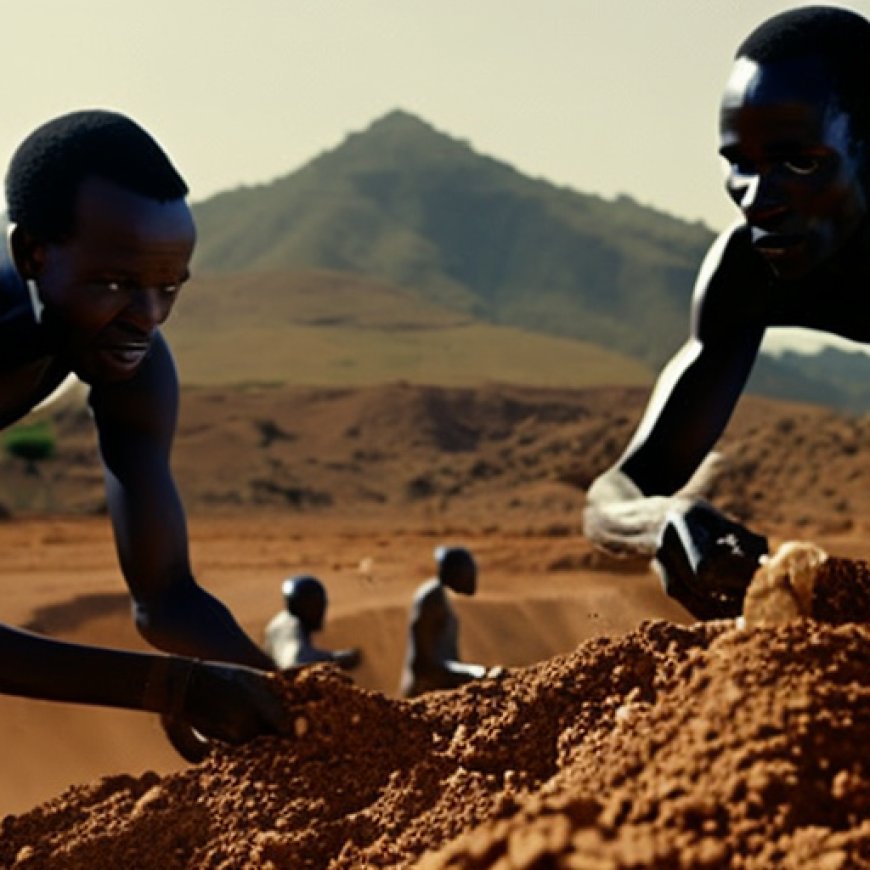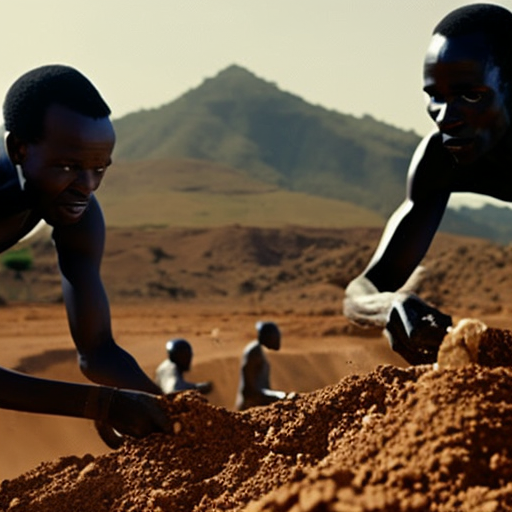Kenyans in dry areas build sand dams to counter dry season
Kenyans in dry areas build sand dams to counter dry season The Mercury News



A sand dam operates in Makueni County, Kenya on Friday, March 1, 2024. Building sand dams, a structure for harvesting water from seasonal rivers, helps minimize water loss through evaporation and recharges groundwater.
Introduction
On a dry riverbed in Kasengela village, residents are working together to build a sand dam. This structure, made of concrete, harvests water from seasonal rivers and creates an artificial aquifer that fills up during rainy seasons. The construction of sand dams has gained traction in dry regions of Kenya and other parts of Africa as a reliable water source in the face of prolonged drought caused by climate change.
The Importance of Sand Dams
Many communities in arid and semi-arid regions of Kenya, such as Machakos County, rely on seasonal rivers for water. Sand dams built on these rivers help minimize water loss through evaporation and recharge groundwater. With limited access to piped water and few reliable alternatives, sand dams have become increasingly important for these communities.
Benefits of Sand Dams
- Minimize water loss through evaporation
- Recharge groundwater
- Provide a reliable water source during dry seasons
- Reduce the need for long-distance water fetching
- Improve agricultural productivity
- Enhance access to clean water for domestic use
Case Study: Kyalika Village
In Makueni County, Rhoda Peter and her welfare group have built three sand dams along a nearby river. These dams have significantly improved their access to water, reducing the need to travel long distances to fetch water from springs in the faraway Mbooni Hills. The sand dams have provided a reliable water source throughout the year, even during the dry seasons.
Government Initiatives
The Makueni County government, in collaboration with partner organizations and residents, has been actively involved in building sand dams. By 2022, they had constructed 71 sand dams in the county. The government recognizes the dire water situation in the region and the impact it has on agriculture, health, and education. Sand dams offer a sustainable solution to these challenges by ensuring access to clean water and enabling communities to focus on economic activities.
Sustainable Development Goals (SDGs)
- SDG 6: Clean Water and Sanitation
- SDG 13: Climate Action
- SDG 15: Life on Land
Proper Siting of Sand Dams
Scientists emphasize the importance of proper siting of sand dams for their effectiveness. Factors such as rainfall amount, soil composition, and rock formations must be considered when selecting the location for a sand dam. A study conducted in Kitui County found that about half of the surveyed sand dams were not functional due to unfavorable siting.
Expanding Impact
The success of sand dams in providing reliable water sources has gained the attention of governments and organizations in other local counties and countries. The Africa Sand Dam Foundation (ASDF), in collaboration with governments and nonprofits, has worked on sand dam projects in various countries, including Malawi, Zimbabwe, Mozambique, Madagascar, Eswatini, Ethiopia, Tanzania, Somalia, and India.
Conclusion
Sand dams offer a sustainable solution to water scarcity in arid and semi-arid regions. By minimizing water loss through evaporation and recharging groundwater, these structures provide reliable water sources throughout the year. Proper siting and community-driven initiatives are crucial for the success of sand dams. As climate change continues to exacerbate drought conditions, sand dams play a vital role in achieving the Sustainable Development Goals related to clean water, climate action, and life on land.
The Associated Press’ climate and environmental coverage receives financial support from multiple private foundations. AP is solely responsible for all content. Find AP’s standards for working with philanthropies, a list of supporters and funded coverage areas at AP.org.
SDGs, Targets, and Indicators
-
SDG 6: Clean Water and Sanitation
- Target 6.1: By 2030, achieve universal and equitable access to safe and affordable drinking water for all.
- Target 6.4: By 2030, substantially increase water-use efficiency across all sectors and ensure sustainable withdrawals and supply of freshwater to address water scarcity.
The article discusses the construction of sand dams as a solution to minimize water loss through evaporation and recharge groundwater. This directly relates to SDG 6, which aims to ensure access to clean water and sanitation for all. The targets mentioned in the article focus on achieving universal access to safe drinking water (Target 6.1) and improving water-use efficiency to address water scarcity (Target 6.4).
Indicators related to these targets could include the percentage of households with access to clean piped water, the cubic meters of water produced per day compared to demand, and the reduction in the time spent fetching water.
-
SDG 13: Climate Action
- Target 13.1: Strengthen resilience and adaptive capacity to climate-related hazards and natural disasters in all countries.
- Target 13.2: Integrate climate change measures into national policies, strategies, and planning.
The article mentions that human-caused climate change is leading to prolonged seasons of drought, making reliable water sources crucial. This connects to SDG 13, which focuses on climate action. The targets highlighted in the article emphasize the need to strengthen resilience to climate-related hazards (Target 13.1) and integrate climate change measures into policies and planning (Target 13.2).
Possible indicators for measuring progress towards these targets could include the number of sand dams built in response to climate-related water scarcity, the adoption of climate change measures in local policies, and the impact of sand dams on groundwater recharge and vegetation rejuvenation.
Table: SDGs, Targets, and Indicators
| SDGs | Targets | Indicators |
|---|---|---|
| SDG 6: Clean Water and Sanitation |
|
|
| SDG 13: Climate Action |
|
|
Behold! This splendid article springs forth from the wellspring of knowledge, shaped by a wondrous proprietary AI technology that delved into a vast ocean of data, illuminating the path towards the Sustainable Development Goals. Remember that all rights are reserved by SDG Investors LLC, empowering us to champion progress together.
Source: mercurynews.com

Join us, as fellow seekers of change, on a transformative journey at https://sdgtalks.ai/welcome, where you can become a member and actively contribute to shaping a brighter future.







